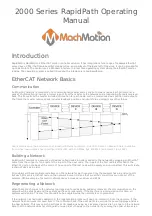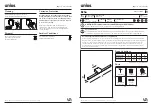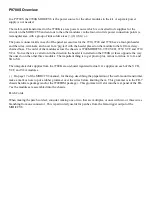
Manual – Starflow Ultrasonic Doppler Instrument
Model 6526
Unidata Manual - 6526 Starflow User Manual Issue 17 01 2020.docx
Page 8
4.0
INSTALLATION
Starflow is a very effective alternative to conventional flow measuring installations for small
streams. It is unobtrusive and ideally suited to flow conditions in culverts, channels and drains.
Cost, maintenance and environmental impact of new installations is minimized by avoiding the
construction of conventional flow measuring structures.
4.1
Site Considerations
The Doppler signal received, and the accuracy of the computed velocity, is related to the flow and
cross-section characteristics of the site. A suitable site has the following features:
Feature
Description
Flows are laminar and the
velocity measured by the
transducer can be related to
the mean velocity of the
channel.
Velocity is measured from a limited path in front of and above
the acoustic sensors. This area varies with the amount of
suspended material in the water and the channel
characteristics. The user has to determine the relationship
between the measured and mean velocity.
The channel cross section is
stable.
The relationship between water level and the cross-sectional
area is used as part of the flow computation.
Velocities are greater than 20
mm / second.
The transducer does not process velocities slower than this.
The maximum velocity is 5 metres / second. The transducer
will measure velocities in both directions.
Reflectors are present in the
water.
Generally the more material in the water the better. Starflow
generally works well in clean natural streams but problems
may be encountered in extremely clean water.
No excessive aeration.
Bubbles are good scatterers and occasional small bubbles will
enhance the signal. However the speed of sound can be
affected if there are excessive amounts of air entrapped in the
flow.
The bed is stable and Starflow
will not be buried by deposits.
Some coating and partial burying has little effect on the
measured velocity but it should be avoided.
Starflow Pointing Upstream or
Downstream?
Pointing the sensor end downstream will stop it accumulating
debris; however in some channels the sensor body may disturb
the velocity distribution unacceptably. The velocity reading will
be positive when pointing upstream and negative when
pointing downstream. The Starflow may be configured to only
read positive velocities regardless of water flow direction.
4.2
Starflow Mounting
A typical installation is in a pipe or culvert with diameters between 300 and 2000 mm. The Starflow
should be located near the downstream end of a straight and clean culvert, where non-turbulent
flow conditions are maximised. The mounting should ensure the unit sits right on the bottom to
avoid debris catching beneath it.













































